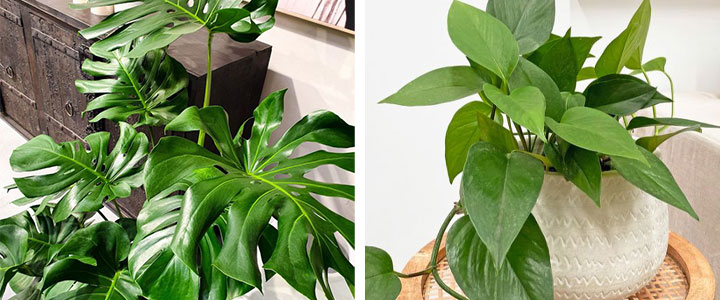The design of a garden is not just about aesthetics; it is also about functionality and creating a space that can be used and enjoyed by its inhabitants. A well-designed garden can provide a peaceful retreat from the hustle and bustle of everyday life, a place to relax and unwind, and a space to entertain friends and family.
One of the main reasons why tropical houseplants are so beloved is their ability to thrive in indoor environments. Many tropical plants are well-suited to the conditions found inside a typical home, such as moderate temperatures, high humidity, and indirect sunlight. This makes them ideal for those who don't have access to a garden or outdoor space but still want to enjoy the benefits of gardening.
Whether you're a seasoned plant lover or a complete beginner, tropical houseplants are a wonderful addition to any home. With their beauty, health benefits, and ease of care, they are sure to bring a touch of the tropics to your living space and brighten your days with their natural beauty. So why not bring a little piece of paradise into your home today with a stunning tropical houseplant?
When it comes to garden design, there are a few key principles that should be followed. The first of these is to consider the overall layout of the garden, taking into account factors such as the size and shape of the space, the existing features, and the needs and preferences of the homeowner. The layout of the garden should be practical and functional, with clearly defined areas for different uses, such as dining, relaxation, and play.
Furthermore, houseplants can also have physical health benefits. For example, some plants, such as aloe vera and lavender, have been used for centuries for their medicinal properties. Aloe vera is known for its healing properties and can be applied topically to soothe burns and cuts, while lavender has a calming effect and is often used in aromatherapy to promote relaxation and improve sleep. Having these plants in your home can provide a natural and effective way to treat minor ailments and promote overall well-being.
Gardening is a timeless hobby that brings joy and tranquility to many people. But planning and designing a garden can be a daunting task, especially if you struggle to visualize the end result. This is where 3D garden design comes in—a modern and innovative tool that allows you to create a realistic depiction of your dream garden before putting in the hard work. In this article, we will explore the advantages of 3D garden design and how it can help you bring your outdoor space to life.
In addition to selecting the right plants, it's important to provide them with the proper care and maintenance to ensure their longevity and health. This includes watering your plants regularly, providing them with adequate sunlight, and occasionally fertilizing them to promote growth and blooming. It's also important to regularly dust and clean your plants to prevent the buildup of dust and debris, which can block their pores and hinder their ability to photosynthesize.
Lighting is another important aspect of garden design, helping to create a welcoming and inviting atmosphere in the evening hours. Outdoor lighting can be used to highlight features such as plants, trees, and sculptures, and can also be used to illuminate pathways and seating areas, making the garden safe and easy to navigate after dark.
In addition to their mood-boosting properties, houseplants can also help to improve concentration and productivity. Research has shown that having plants in the workplace can lead to increased focus and creativity, as well as reduced levels of fatigue and anxiety. This is because plants have been found to help regulate humidity levels and create a more comfortable and inviting environment, which can in turn help to enhance cognitive function and overall performance.
When it comes to choosing houseplants for your home, there are a wide variety of options to consider. Some popular choices include spider plants, peace lilies, snake plants, and pothos, all of which are known for their air-purifying qualities and ease of care. If you have limited space or sunlight, you may want to consider low-light plants such as philodendrons, ferns, or spider plants, which can thrive in darker conditions.
Another advantage of 3D garden design is the ability to experiment with different elements before committing to any decisions. You can try out different plant combinations, hardscaping features, and furniture layouts to see what works best for your space. This can save you time and money in the long run, as you can make informed decisions about what will work best for your garden.
One of the most well-known benefits of houseplants is their ability to improve air quality. Plants take in carbon dioxide and release oxygen through the process of photosynthesis, which means they can help to freshen up the air in your home. In addition, some houseplants have been shown to filter out harmful toxins such as formaldehyde, benzene, and trichloroethylene, which are commonly found in household products and can contribute to indoor air pollution.